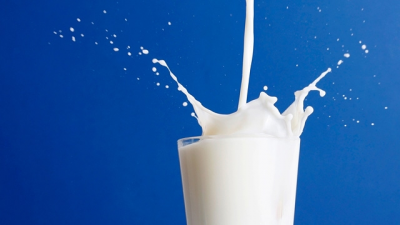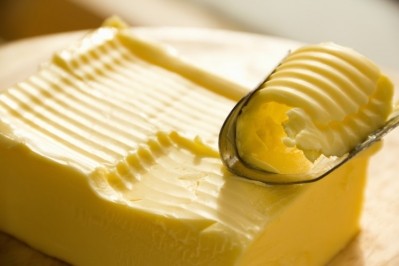Higher charges and more red tape: How will Britain’s new border model affect dairy imports from Europe?

The UK’s Border Target Operating Model (BTOM) – post-Brexit Britain’s new border model, comprising a set of security, control and safety rules for import goods – is finally being phased in, starting Wednesday, January 31.
How are common EU dairy commodity imports classified under the new risk-based system?
Medium
Chilled or frozen dairy products that contain raw milk (e.g. Roquefort)
Infant formula, follow-on formula, FSMP and baby food
Low
Non-raw dairy products, frozen or chilled (e.g. cheese and butter made with pasteurized milk)
Ambient dairy (e.g. UHT milk)
This means that imports of animal products, live animals, plants and other agri-food products will be subject to Sanitary and Phytosanitary (SPS) checks, a new control mechanism designed in line with global border requirements to maintain and safeguard biosecurity. Additional customs procedures will also start to apply to EU imports at later dates, and goods have been categorized according to three risk categories:
- low: unlikely to be subject to routine documentary or physical checks and only require a commercial document from the supplier;
- medium: more likely to be subject to physical and documentary checks, must have a health certificate, the importer must notify the UK authorities before the goods arrive in Britain, and after April 30, the goods must travel through specific border control points; and
- high: physical checks are mandatory, plus the requirements for a health certificate and a pre-arrival notification.
Many dairy products - such as cheeses that contain raw milk - are considered medium-risk, while shelf-stable dairy and chilled pasteurized milk products fall in the low-risk category.
DairyReporter reached out to the Institute of Export & International Trade, a trade association representing exporters and importers, to find out how much friction and red tape the new rules could introduce.
Marco Forgione, director general of the Institute, explained: “Many dairy products are classed as ‘medium risk’, meaning that to be exported from the EU they will need an Export Health Certificate (EHC) and a notification in EU’s TRACES NT system [an online digital certification and management platform for the import of goods, ed.].
“This means that the exporter needs to apply via their local authority for the EHC, and the official veterinarian will need to endorse the certificate. How smoothly this process goes will depend on the individual exporter’s knowledge and confidence, as well as the availability of official veterinarians in the exporting country.
“It will also have a cost implication anywhere from approximately €140 to €260 per shipment, depending on different categories and administration charges.”
Over in the UK, the importer will then need to arrange for a notification in the Import of Products, Animals, Food and Feed system (IPAFFS) with a Common Health Entry Document (a document that records the outcome of the checks), which will need to be referenced in the import entry on the Customs Declaration Service. But here’s the caveat.
“The importer cannot do this until they have received the documentation from the exporter, and the importer must complete the pre-notification 24 hours prior to the goods arriving in the UK,” Forgione explained. “Even low risk dairy products, such as UHT milk or cheeses made from non-raw milk, will need to be pre-notified ahead of their arrival in the UK by the importer and, to do so, they will need additional information from the exporter.
“The complexity of these procedures could result in some small EU businesses either suspending or stopping shipments to the UK.
“Alternatively, they may choose to change the way that they sell their goods - for example, by using distributors - but the volume of goods would need to justify this decision,” he added.
Plenty of unknowns remain
Some parts of the process won’t be enforceable until after April 30 to allow officials to assess how the border model is working.
“Until April 30, goods do not need to travel through a designated border control point (BCP),” Forgione said. “After April 30, the shipping route will need to include an appropriate BCP, which will also incur charges in the UK.
“This includes the Common User Charge, which will be applicable to every shipment with an EHC, as well as any specific inspection charges for those consignments which will be selected for identity or physical checks.”
He added that the exact costs of the Common User Charge or inspections are still unknown, as are the locations of BCPs, their designations and operating hours.
The final implementation stage, currently slated for October 31, 2024, will see Safety and Security declarations required for all EU imports. “The biggest risk here is whether the haulage industry will be ready for these changes – EU-only hauliers do not currently have to comply with this requirement and Entry Summary Declaration (import Safety & Security declaration) is the responsibility of the party operating the means of transport crossing the border,” said Forgione.
“All of these formalities add time and cost to the supply chain and require both the exporter and the importer to understand their obligations, as well as ensuring that any freight or customs agents who are engaged to move the goods also follow the correct processes,” he concluded.
Trusted Trader schemes and other ‘easements’
Forgione explained that UK officials are still tweaking the rules, having recently reclassified fruit and vegetables to medium-risk from low, though these goods are still treated as low-risk at the border, likely in order to avoid food shortages as the UK imports around 45% of vegetables and 84% of fruit.
“There are certain easements being implemented, such as reducing from 24-hour pre-notifications to 4 hours,” Forgione said. “However, this would be up to each individual Port Health Authority to grant and will probably not be a ‘blanket reduction’ for all arrivals at all locations.
“This will be due to different levels of staffing and capacity at all BCPs – some may be more prepared to deal with a shorter pre-notification window and others would struggle to facilitate this.”
The UK government is also running pilots of so-called Trusted Trader schemes, designed to allow for easements for medium-risk goods, though Forgione explained that these schemes will not be live and in place ready for April 30.
“While the deadlines are set in BTOM, there are still many areas where further clarity is required so all parties needs to keep updated on the latest information and developments, especially in readiness for April 30, which is only 13 weeks away,” he added.
Asked what businesses trading with dairy goods should do ahead of the milestone date in April, he said: “Exporters and importers should talk to each other to ensure that everyone is on the same page in terms of understanding their responsibilities.
“Exporters in the EU should also reach out to their local authority responsible for SPS goods as well as check on the availability of official veterinarians in their area – some adjustments may need to be made to the exporting processes.”








